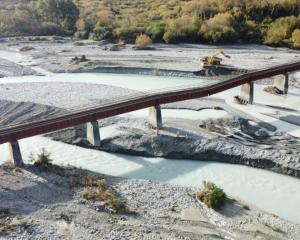
Researchers have begun investigating how some New Zealand communities could be pulled back from hazard zones in the face of flooding driven by climate change and sea level rise.
A new study, to be led by GNS Science as part of a near million-dollar wider research programme, will look at ways authorities and communities can plan for homes to be moved to safer ground.
It is estimated two thirds of Kiwis live in areas prone to flooding. At least 43,000 homes lie within 1.5 metres of the present average spring high tide, and nearly 9000 within 50cm.
The most optimistic emissions scenario has global average sea levels likely to rise between 44cm and 55cm by 2100.
One way to meet this threat is with what's called "managed retreat'' - shifting back houses and infrastructure and allowing the shoreline to move inland.
"In New Zealand, there have always been communities in hazard areas, particularly on the coast, and this is something that's always been an option,'' said GNS researcher Emily Grace, who is leading the study.
"But it's definitely had more prominence in the last few years with people becoming more aware of sea level rise and the effects of global warming.''
While there were measures within the Resource Management Act that authorities could use to help plan for shifting homes or roads, the issue was fraught with complexity.
There were conflicts between what actions regional and district councils could take, and private property rights also posed barriers for planners, Ms Grace said.
"It's the kind of thing that goes in the too-hard basket, really - and part of the point of the research is to find out why it has not been carried out by councils in New Zealand and what could help change that.''
With the exception of Christchurch's post-quake red zone, she could cite just a few examples of such moves being taken.
The study, awarded a $300,000 grant through the "Resilience to Nature's Challenges'' National Science Challenge, would involve a sweep of research and case law, along with consultation with council, community, iwi and sector groups.
Grace ultimately hoped to provide councils clear guidance on how they could act while they still could as the impacts of climate change became more apparent.
"It forces the issue, really, and it can't be ignored for all that much longer.''
The work comes after researchers last month warned thousands of coastal homes could become uninsurable by private companies in the face of climate change, meaning the risk may have to be pushed on to the Crown or property owners.
That report laid out six high-priority research questions, including how sea level rise risks currently fall across different parties, what policy options are available for when the tipping point of uninsurability is reached and what those tipping points would be.
Other studies just funded by the science challenge - a consortium of about 120 researchers from universities and institutes - will tackle risk communication, citizen science, and how electricity may have to be generated on the South Island's West Coast for up to eight weeks in the event of a major Alpine Fault earthquake.
More projects are expected to be announced in the next few weeks.
NZ and climate change
• Under present projections, the sea level around New Zealand is expected to rise between 50cm and 100cm this century, while temperatures could also increase by several degrees by 2100.
• Climate change would bring more floods (about two-thirds of Kiwis live in areas prone to flooding); make our freshwater problems worse and put more pressure on rivers and lakes; acidify our oceans; put even more species at risk and bring problems from the rest of the world.
• Climate change is also expected to result in more large storms, compounding the effects of sea level rise.
• New Zealand, which reported a 23% increase in greenhouse gas emissions between 1990 and 2014, has pledged to slash its greenhouse gas emissions by 30% from 2005 levels and 11% from 1990 levels by 2030.












